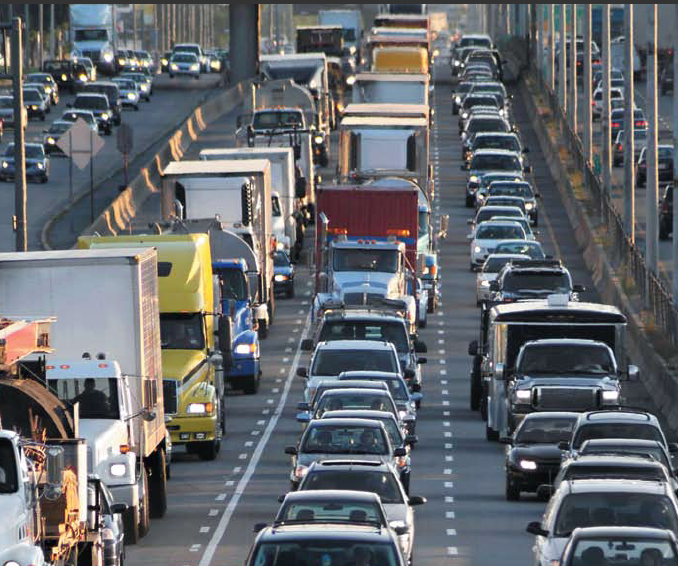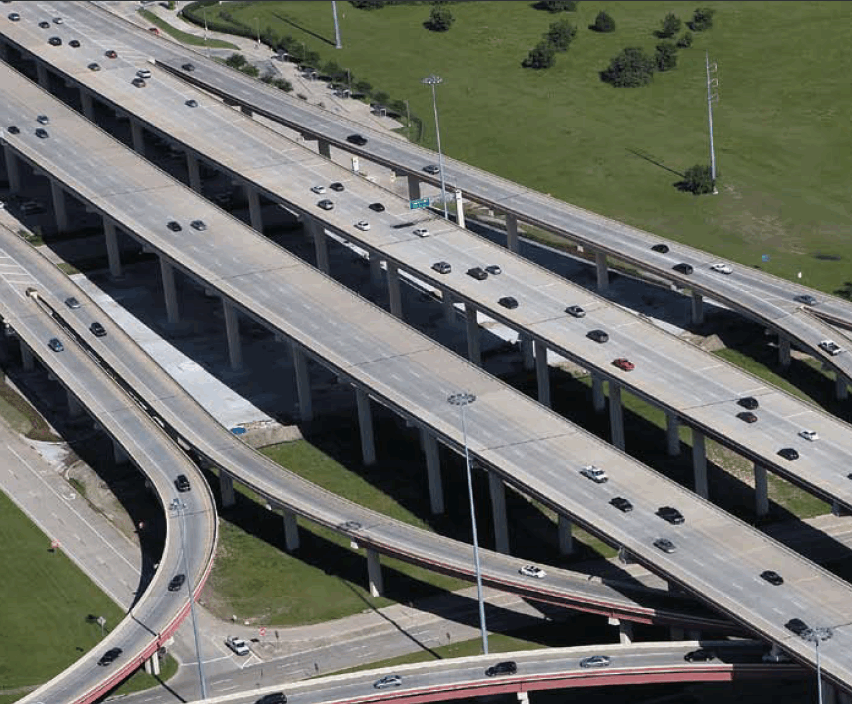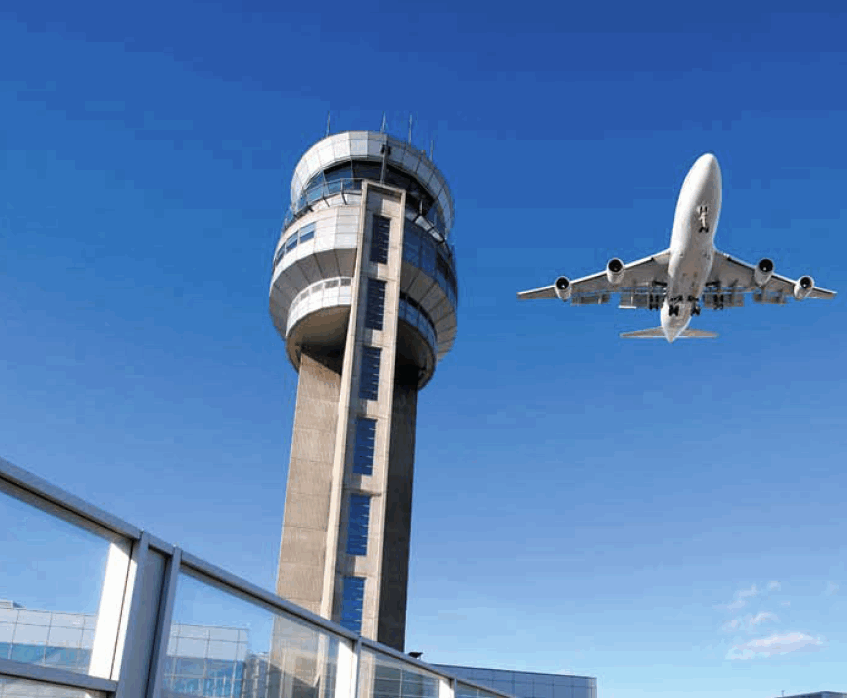MILLER CENTER OF PUBLIC AFFAIRS, UNIVERSITY OF VIRGINIA
EXECUTIVE SUMMARY
“The Department of Transportation will have a mammoth task—to
untangle, to coordinate, and to build the national transportation
system for America that America is deserving of.”
President Lyndon B. Johnson
October 15, 1966
Transportation systems are the backbone of America: They keep our nation strong and moving. But we have not been taking good care of this resource. Lacking a coherent vision for our transportation future and chronically short of resources, we defer new investments, fail to plan, and allow existing systems to fall into disrepair.
This shortsightedness and underinvestment—at the planning level and on our nation’s roads, rails, airports and waterways—costs the country dearly. It compromises our productivity and ability to compete internationally; transportation users pay for the system’s inefficiencies in lost time, money and safety. Rural areas are cut off from economic opportunities and even urbanites suffer from inadequate public transportation options. Meanwhile, transportation-related pollution exacts a heavy toll on our environment and public health.
Stakeholders in the transportation community have recognized these costs. It is time to rethink existing systems for the 21st century and create an agenda for enacting change. Significant reforms and improvements are well within our reach.
The Miller Center assembled a highly distinguished group of transportation policy experts, all of whom have dedicated significant time and energy to developing solutions for the funding and planning challenges that confront our transportation system. Bringing these individuals together through the David R. Goode National Transportation Policy Conference, the Miller Center of Public Affairs at the University of Virginia sought to build on their work and identify the most practical, implementable, and politically viable ideas among them.
Our group of invited participants included over 80 experts representing a wide array of transportation interests. They included current and former Department of Transportation officials, policymakers at the state and national levels, researchers, and community planners, as well as representatives from the trucking, rail and aviation associations and business interests. Former Secretaries of Transportation Norman Mineta and Samuel Skinner led the group, and former Under Secretary of Transportation for Policy Jeffrey Shane served as our Conference Director.
Updating and bringing innovation to our national transportation system would have a number of payoffs:
Winning in the Global Marketplace. Our chief trading partners are making significant investments in their transportation infrastructure; America must do the same to remain competitive.
Investment in Expanded Transportation Options, Including High Speed Rail and Other Innovations. Congestion on roads and in the air can be eased by high-speed rail, especially in high population areas and busy travel corridors.
Funding Mechanisms that Get the Incentives Right. Funding for the Interstate Highway System was intended to come from drivers, but the current fuel tax no longer creates a direct link between charges and use. We must return to a “pay as you go” system.
More efficient and reliable air travel. The technology to improve flight reliability and safety through new operations and systems exists. We must implement those systems without delay.
Less Time Wasted in Traffic. New technologies can also improve surface transportation flow, which means less time on the road and less aggravation, not to mention lower, pollution and fuel expenditures.
Lower Long-Term Costs to U.S. Taxpayers and to the Economy as a Whole. Congestion and inefficiency experienced at the personal level translate to significant impacts on a national level. To reduce these impacts, our transportation systems need increased and sustained funding.
These payoffs cannot be achieved without significant changes. The ten recommendations that emerged from the discussions at the David R. Goode Conference span a wide range of transportation-related issues. They are outlined in the “Recommendations and Call to Action” section beginning on page 15 of this report. The emphasis throughout was on long-term, sustainable changes instead of short-term “stop-gap” measures. Participants wanted to avoid the fragmentation that so often exacerbates our transportation challenges—thus, their recommendations extend across different transportation modes and issues. The objective was to identify a whole agenda that legislators and policy makers could refer to in crafting new policies for keeping America’s roads, skies, rails and waterways well-funded, in good repair, and functioning with optimal efficiency and safety. These recommendations include:
1. Stop the bleeding: Congress must address the immediate crisis in transportation funding (found on page 28).
2. Beyond the gas tax: Innovative thinking is needed to develop the next generation of user fees. Specifically, future funding mechanisms should not depend primarily on fossil-fuel consumption—which the government is actively seeking to discourage through a number of other policies—to keep up with transportation investment needs (found on page 31).
3. Jobs for the future, not just today: Future stimulus spending should be directed to those transportation projects that will deliver the greatest returns in terms of future U.S. competitiveness, economic growth, and jobs. Building a foundation for sustained prosperity and long-term job creation is more important than boosting short-term employment in road construction (found on page 34).
4. Pass the power, please: Clarify decision-making power and enhance the effectiveness of states, localities, and metropolitan planning organizations (found on page 35).
5. Adopt a capital budget: The federal government should adopt accounting methods that (A) recognize expenditures on transportation infrastructure as investments (rather than consumption) and (B) take into account future returns on those investments (found on page 38).
6. Connect the dots: Adopt an integrated approach to transportation planning that includes freight and goods movement and stresses intermodal connectivity (found on page 38).
7. Getting Americans home in time for dinner: Find more effective ways of reducing urban congestion (found on page 40).
8. It’s all about leverage: Encourage public-private partnerships while also improving oversight of such partnerships (found on page 44).
9. Deliver transportation investments on time: Reform project planning, review, and permitting processes to speed actual implementation (found on page 45).
10. Build a foundation for informed policy: Better and more timely data are essential to measure progress toward defined goals and objectives and to improve the performance of the nation’s transportation systems (found on page 46).
This report is organized as follows: Section 1 introduces the issues that need to be addressed. Section 2 offers proposed solutions to those issues. Additional detail about the conference itself—including session topics and panelists—can then be found in the final sections of the report. Many ideas and suggestions were discussed in panel sessions that deserve continued attention beyond the principal thrust of this report.
It is our hope that the collective thought, expertise and attention applied to the crafting of these recommendations will add direction and focus to the task of revitalizing our national transportation systems.
Download full report (PDF): Well Within Reach
About the Miller Center of Public Affairs
http://millercenter.org
“The University of Virginia’s Miller Center of Public Affairs, following Jefferson’s vision of the University’s public service mission, is a leading public policy institution that serves as a national meeting place where engaged citizens, scholars, students, media representatives, and government officials gather in a spirit of nonpartisan consensus to research, reflect, and report on issues of national importance to the governance of the United States, with special attention to the central role and history of the presidency.”
Tags: David R. Goode National Transportation Policy Conference, Department of Transportation, Lyndon B. Johnson, Miller Center of Public Affairs, University of Virginia, UVA, VA, Virginia









 RSS Feed
RSS Feed